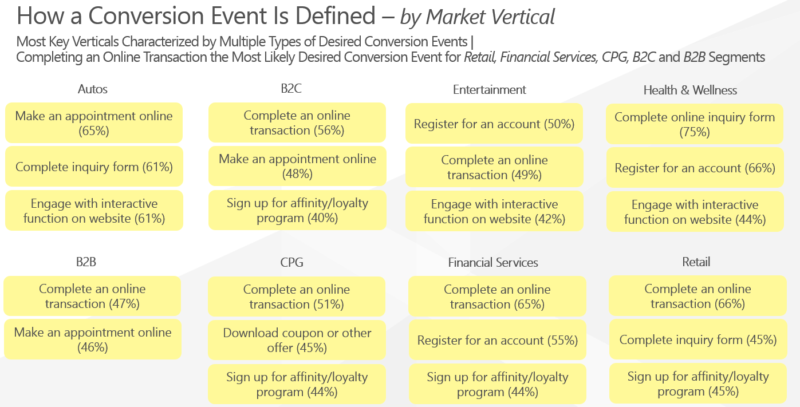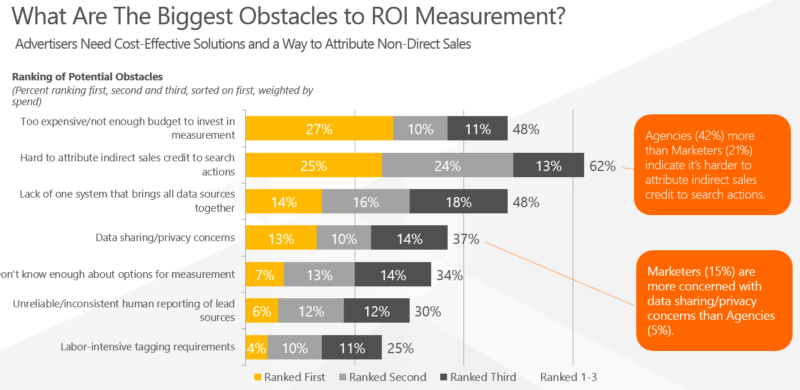Search & ROI: Make The Most Of This Evolving Relationship
Paid search has made it easier than ever to demonstrate the value of advertising, allowing us to rethink our methods for measuring ROI.
Back in the early days of modern marketing — think the Mad Men era, or even the days of big-spend, dot.com bubble advertising — measuring ROI was the most elusive of goals, a magical thing when accomplished, but more often a noble aspiration. It was a “stretch goal” that stayed stubbornly out of reach.
So, when search advertising emerged as a powerful and data-driven marketing tool, many viewed it as a white knight, coming to save the day and to prove once and for all that marketing deserved its share of attention and investment. If there was such a thing as a marketing silver bullet, search advertising was it.
Today, we take for granted that search is the most measurable way to reach our target audience, and we have the spreadsheets — and business results — to prove it. But just as search marketing continues to evolve, so should our expectations for what it can deliver. It’s time to rethink ROI.
Brand Or Performance? Know Your Objectives
Search marketing and brand strategy aren’t typically spoken of in the same breath (or even used in the same PowerPoint strategy pitch), but increasingly, advertisers are using search to build brand awareness.
In a recent internal survey of over 750 Bing Ads advertisers (by Microsoft, my employer), a full 60 percent rated “Drive Brand Awareness,” “Improve Brand Perceptions” and “Drive Customer Engagement” as extremely or very important. Less than half (48 percent) gave “Drive In-store/Offline Sales” the same level of importance.
So, while search is still the go-to option for lead generation and other performance-based metrics, it has also become an important weapon in the brand marketer’s arsenal. No matter what role search plays in your marketing mix, be clear about what you want it to achieve.
Conversions: They’re Not Just About Transactions Anymore
Over half the search advertisers we talked to define a conversion as a completed online transaction.
But depending on who you are, that “completed transaction” can look very different.
Agencies tend to favor couponing and promotional offers, while marketers tend to be more focused on new account registrations or affinity program sign-ups. And all search marketers we surveyed seemed to be expanding their definition of “conversion,” assigning the term to everything from calling a phone number to making an appointment or engaging with an interactive function on a website (e.g. viewing a menu or customizing a virtual dream car).
Just take a look at how different verticals characterize conversions within their unique business sectors:
Use Your Tools
However you define conversions, you’ll undoubtedly get more of them by utilizing the increasingly power tools at your disposal to help you measure results. When we asked survey participants if they regularly use tags on web pages to facilitate conversion tracking, less than half (48 percent) responded positively. That means that a majority of search marketers don’t take advantage of this simple yet powerful tool (for Bing, available as a plug-in for Bing Webmaster).
It’s a bit like building a home, furnishing it, and then stopping just short of installing the roof. You’re already investing in search advertising, so be sure to protect that investment. You’ll not only optimize your campaigns, you’ll also be building confidence and laying the groundwork for future marketing investment.
With ROI definitions evolving and tools to measure it improving all the time, you might think that measuring ROI was standard practice. I know I did — so I was surprised to learn that advertisers continue to express a significant level of challenge in taking this important step. Some believe it’s too expensive, others find it too labor-intensive, and still others cite data sharing and privacy concerns.
Making The Most Of Search Advertising
To truly put the power of search advertising to work, keep these three simple but critical steps in mind:
1. First, start by understanding your goals for paid search advertising. Do you want to improve your brand perception, or drive immediate sales?
2. Second, optimize your campaign against those goals. This means great creative, an optimal landing page experience, the right targeting and the adoption of ad products that support your goals.
3. And last — but perhaps most important — enable the conversion tracking codes (it’s as easy as a Bing plug-in!).
We marketers have come a long way from the days of creating a print campaign or commercial and hoping that it boosted business. Today, search advertising is a powerful ally in proving that marketing spend does drive conversion — and its ability to pinpoint why is light-years ahead of where we were just a few ago.
(Stock image via Shutterstock.com. Used under license.)
Opinions expressed in this article are those of the guest author and not necessarily Search Engine Land. Staff authors are listed here.
Related stories
New on Search Engine Land



